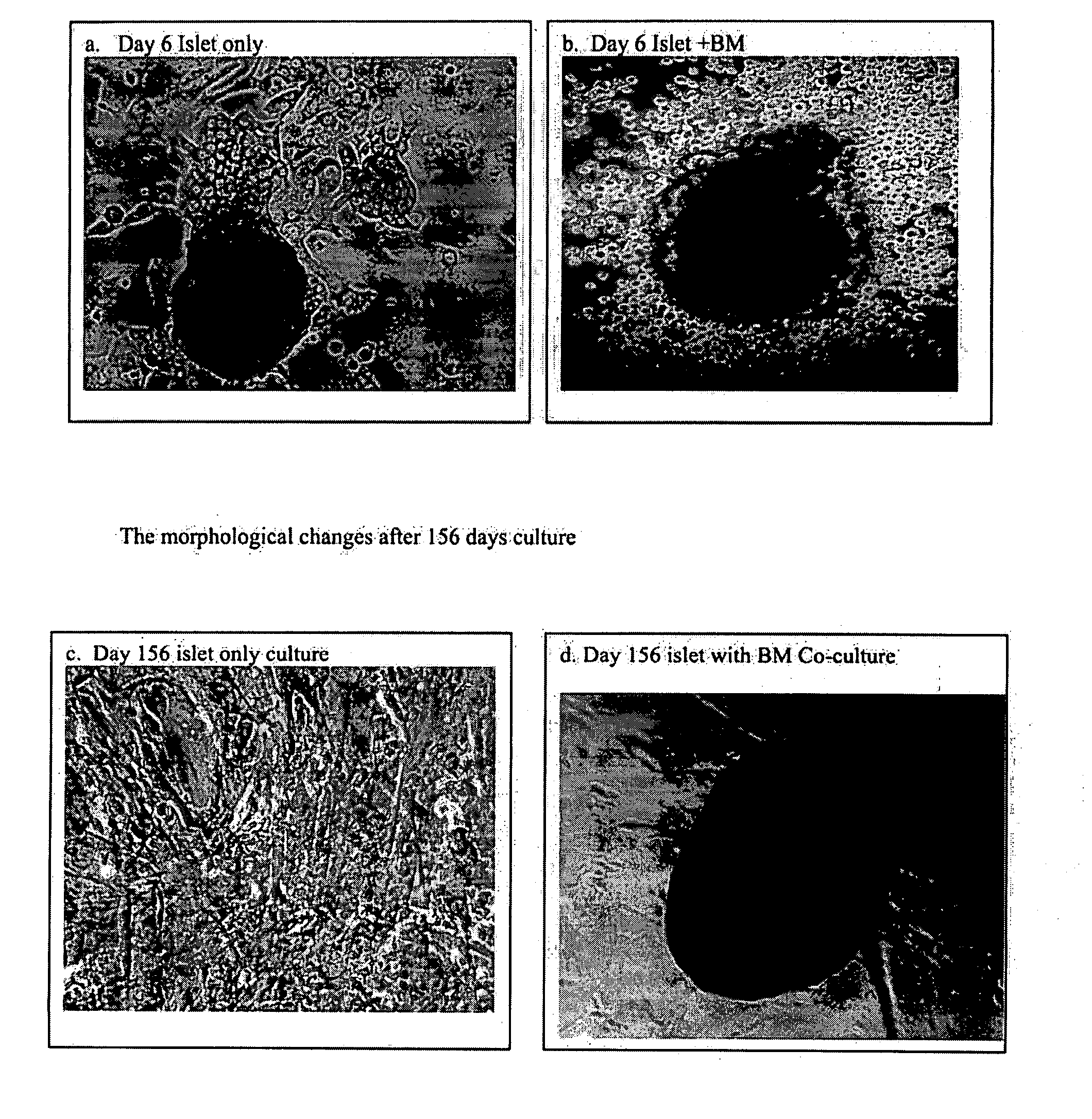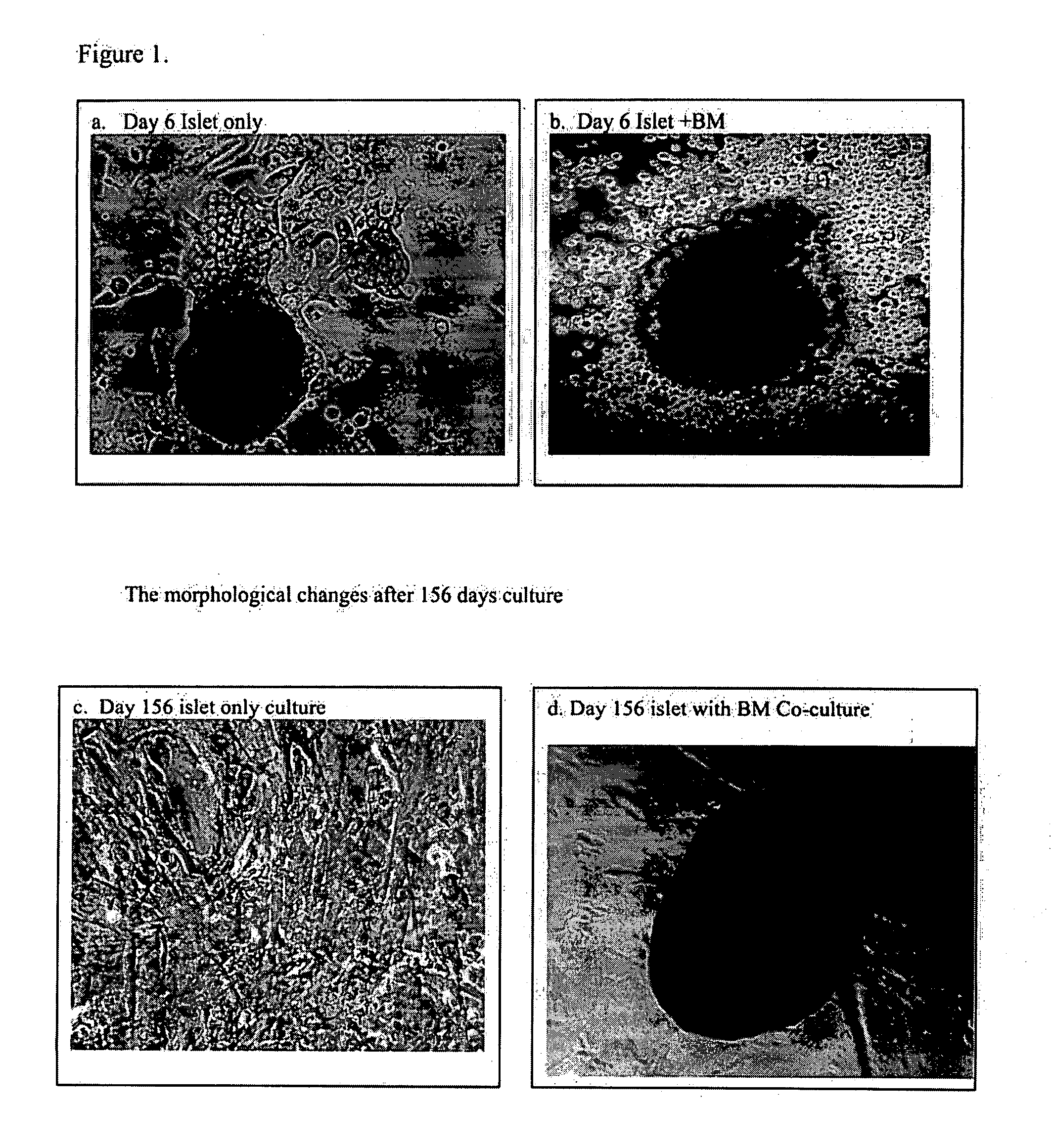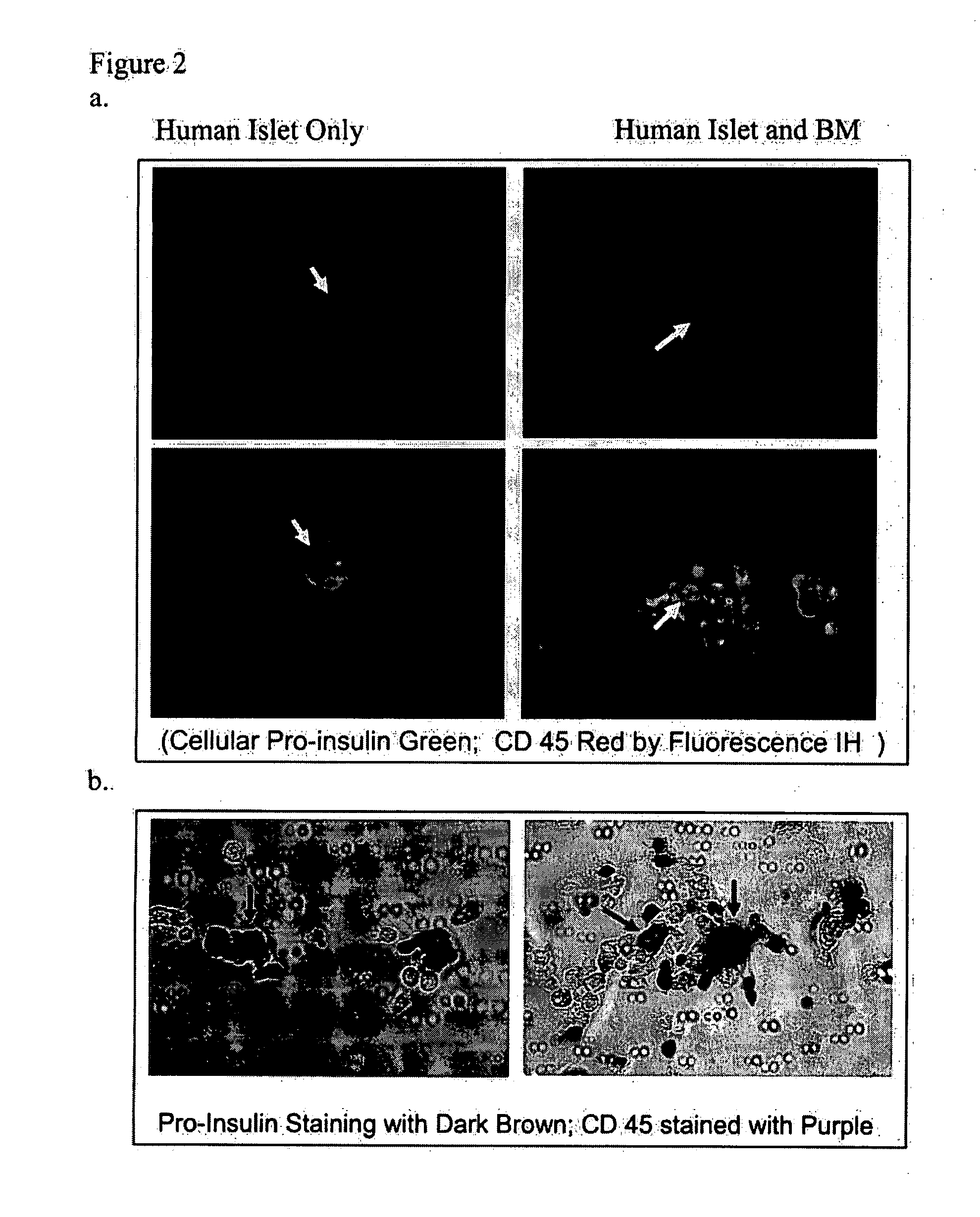Use of bone marrow cells for long term culture of pancreatic islet cells
a long-term culture and pancreatic technology, applied in the field of pancreatic islet cell culture, can solve the problems of limited tissue availability, patient's long-term complications, and many long-term complications, so as to reduce the release of inflammatory cytokines, reduce the inflammatory response, and reduce the release of cytokines and other inflammatory modulators.
- Summary
- Abstract
- Description
- Claims
- Application Information
AI Technical Summary
Benefits of technology
Problems solved by technology
Method used
Image
Examples
example 1
[0050]Methods of cell staining and immunofluorescence using fluorescent and chemical dyes is well known to those skilled in the art. A number of examples include such staining methods. An exemplary method of cell staining is provided. Cells grown on chamber slides were fixed with 3% paraformaldehyde, followed by exposure to 10% normal goat serum. The slides were blotted without washing and a mixture of the primary antibodies were applied, and the slides were then incubated in a moist chamber at 4° C. overnight. The slides were washed 3times, followed by exposure to the secondary antibody, for 45 minutes, at room temperature. After washing, diluted secondary antibody was applied and the slides were incubated for 15 minutes. The slides were subsequently washed extensively with PBS and the above process optionally repeated with a second fluorescent color (e.g., DAPI) and / or third antigen-detecting antibody. When the process was finished, the slide was covered with ...
example 2
Co-Culture of Human Bone Marrow and Human Islet β Cells
[0051]Human islet tissue, from normal donors, was obtained from Islet Resource Centers (ICRs) in the ICR Basic Science Islet Distribution Program, Human Islet Laboratory, University of Pennsylvania (Philadelphia, Pa.), Joslin Diabetes Center (Boston, Mass.) and City of Hope National Medical Center (Duarte, Calif.). The use of these cells were approved by the IRB at Roger Williams Hospital and the ICRs Committees.
[0052]Human bone marrow from normal donor was obtained after signing the appropriate consent form that had been approved by Roger Williams Hospital Institutional Review Committee (IRB). Bone-marrow mononuclear cells were isolated by Ficoll-Paque™ Plus (Amersham Biosciences; Amersham, UK) per manufacturer directions. Cells were then washed twice with 5% FCS / PBS, resuspended in culture medium (see below). Trypan blue staining was used to assess cell viability.
[0053]Human islets were received from Islet Cell Resource Center...
example 3
Evaluation of Islet Function in an Insulin Release Assay
[0062]Islet cell function was evaluated by measurement of insulin release with or without a glucose challenge. The culture media was collected twice per week and stored at −80° C. until assay for the basal insulin release by ELISA.
[0063]A high-glucose challenge assay was performed once a week as follows: Media was collected, and cultured cells were washed once with RPMI medium. The media was then replaced with high-glucose (20 mM) RPMI 1640 for 15 and 30 minutes. The media was finally collected and stored at −80° C. until insulin assay by ELISA.
[0064]Insulin concentrations in the specimens (cell culture medium or tissue extracts) were measured using Human Insulin ELISA Kit (Linco Research, St. Charles, Mo.) according to the manufacturer's instructions. Briefly, insulin standards and appropriately diluted (1:50-1:500) samples were added to an insulin antibody-coated 96-well microplate and incubated for 2 hours at 4° C. After was...
PUM
| Property | Measurement | Unit |
|---|---|---|
| time | aaaaa | aaaaa |
| weight | aaaaa | aaaaa |
| diameter | aaaaa | aaaaa |
Abstract
Description
Claims
Application Information
 Login to View More
Login to View More - R&D
- Intellectual Property
- Life Sciences
- Materials
- Tech Scout
- Unparalleled Data Quality
- Higher Quality Content
- 60% Fewer Hallucinations
Browse by: Latest US Patents, China's latest patents, Technical Efficacy Thesaurus, Application Domain, Technology Topic, Popular Technical Reports.
© 2025 PatSnap. All rights reserved.Legal|Privacy policy|Modern Slavery Act Transparency Statement|Sitemap|About US| Contact US: help@patsnap.com



